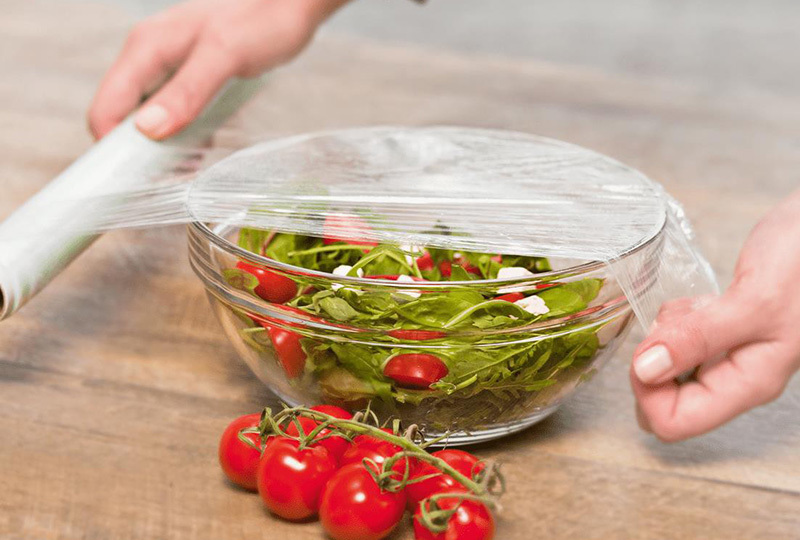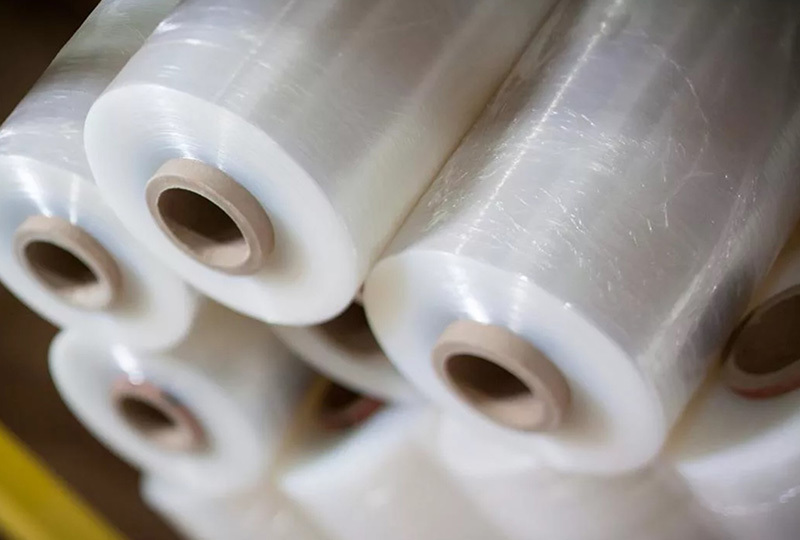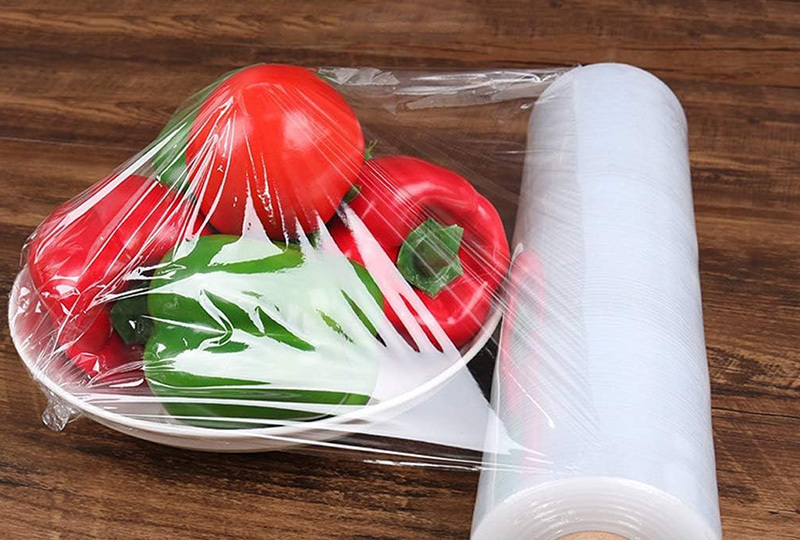The Science Behind Bio-Based Cling Film and Its Benefits
Release time:
Jul 12,2025
The Science Behind Bio-Based Cling Film and Its Benefits Table of Contents Introduction to Bio-Based Cling Film What is Bio-Based Cling Film? Materials Used in Bio-Based Cling Film Advantages of Using Bio-Based Cling Film Applications of Bio-Based Cling Film in Everyday Life Environmental Impact of Bio-Based Cling Film Future Trends in Bio-Based Packaging FAQs
The Science Behind Bio-Based Cling Film and Its Benefits
Table of Contents
- Introduction to Bio-Based Cling Film
- What is Bio-Based Cling Film?
- Materials Used in Bio-Based Cling Film
- Advantages of Using Bio-Based Cling Film
- Applications of Bio-Based Cling Film in Everyday Life
- Environmental Impact of Bio-Based Cling Film
- Future Trends in Bio-Based Packaging
- FAQs about Bio-Based Cling Film
- Conclusion
Introduction to Bio-Based Cling Film
In recent years, **the shift towards sustainable products** has gained significant momentum, particularly in kitchen products like cling film. Traditional plastic wraps are often made from petroleum-based materials that contribute to environmental pollution. Conversely, **bio-based cling film** offers a promising alternative that aligns with eco-friendly practices. This article explores the science behind bio-based cling film, how it is made, its benefits, and its impact on our environment.
What is Bio-Based Cling Film?
Bio-based cling film is a type of food wrap made from renewable biological resources. Unlike conventional cling film, which is primarily composed of polyethylene derived from fossil fuels, bio-based cling film utilizes materials such as **starch, cellulose, or polylactic acid (PLA)**. These materials are sourced from plants, making them more sustainable and environmentally friendly.
Bio-based cling film functions similarly to traditional plastic wraps but offers additional benefits. The unique properties of bio-based materials can provide better food preservation and reduce waste, appealing to environmentally conscious consumers.
Materials Used in Bio-Based Cling Film
The production of bio-based cling film involves various materials that are both sustainable and effective in food storage:
1. Starch-Based Materials
Starch, derived from crops like corn and potatoes, is a common ingredient in bio-based cling film. This material is biodegradable and can be processed to create a flexible and effective barrier against moisture and air, helping preserve food freshness.
2. Cellulose
Cellulose, extracted from wood pulp or plant fibers, is another key component. It possesses excellent oxygen barrier properties, contributing to the preservation of food by slowing down the spoilage process.
3. Polylactic Acid (PLA)
PLA is a bioplastic made from fermented plant starch (usually corn). It is compostable and can break down under industrial composting conditions, making it a popular choice for bio-based cling films. PLA exhibits similar properties to conventional plastic, providing a reliable barrier against contaminants.
4. Other Additives
Some bio-based cling films may incorporate additional additives to enhance their properties, such as antimicrobial agents to extend the shelf life of food products.
Advantages of Using Bio-Based Cling Film
The transition to bio-based cling film brings numerous advantages that extend beyond just environmental benefits:
1. Enhanced Food Preservation
Bio-based cling films often provide superior protection against moisture and air, helping to keep food fresher for longer. This leads to less food waste and can have a positive impact on your grocery bill.
2. Biodegradability and Compostability
Many bio-based cling films are designed to biodegrade within a specific timeframe, reducing their impact on landfills. When composted, these films can return to the earth as organic matter, supporting soil health.
3. Non-Toxic Materials
Bio-based cling films are generally made from non-toxic materials, making them safer for food contact. This feature is particularly important for families with young children who are more sensitive to harmful chemicals.
4. Renewable Resources
Since bio-based cling films are derived from plants, they utilize renewable resources, reducing dependency on fossil fuels. This contributes to a more sustainable production cycle.
5. Supporting Sustainable Agriculture
By choosing bio-based products, consumers support agricultural practices that promote sustainability and environmental stewardship. This connection encourages the growth of crops used in bio-based materials.
Applications of Bio-Based Cling Film in Everyday Life
Bio-based cling film has various applications that can easily integrate into daily routines:
1. Food Storage
The primary use of bio-based cling film is for food storage. It can cover bowls, wrap sandwiches, or seal food items, effectively locking in freshness.
2. Meal Prep
For those who engage in meal prepping, bio-based cling film allows for easy storage of pre-prepared meals, ensuring they remain fresh until ready to eat.
3. Packing Lunches
Parents can use bio-based cling film to pack school lunches, offering a safe and eco-friendly option for wrapping fruits, vegetables, and sandwiches.
4. Catering and Events
Bio-based cling film is an ideal choice for catering businesses looking to reduce their environmental footprint while ensuring food safety during events.
Environmental Impact of Bio-Based Cling Film
The environmental benefits of bio-based cling film are significant when compared to traditional plastic wraps:
1. Reduced Carbon Footprint
Bio-based cling film has a lower carbon footprint due to its reliance on renewable resources instead of fossil fuels. This shift can lead to a decrease in greenhouse gas emissions.
2. Decreased Plastic Pollution
Since bio-based cling films are designed to be biodegradable or compostable, they contribute less to plastic pollution in oceans and landfills, protecting wildlife and ecosystems.
3. Encouraging Sustainable Practices
The growing demand for bio-based products encourages manufacturers to adopt more sustainable practices, ultimately leading to innovations in packaging and production.
Future Trends in Bio-Based Packaging
As the global focus on sustainability continues, several trends are emerging in the realm of bio-based packaging:
1. Innovations in Materials
Research and development in the field of bio-based materials are ongoing. New formulations may enhance the performance characteristics of cling films, making them even more effective for food preservation.
2. Consumer Awareness and Demand
Increasing awareness regarding environmental issues will likely boost consumer demand for bio-based cling films, prompting more brands to offer sustainable options.
3. Regulatory Support
Governments worldwide are beginning to implement regulations aimed at reducing plastic waste, which may further promote the use of bio-based products in various sectors.
FAQs about Bio-Based Cling Film
1. Is bio-based cling film safe for food storage?
Yes, bio-based cling films are generally made from non-toxic materials and are safe for food contact.
2. How long does it take for bio-based cling film to biodegrade?
The biodegradation time can vary based on the specific material and environmental conditions, but many bio-based cling films can break down within several months in composting environments.
3. Can bio-based cling film be recycled?
While some bio-based cling films can be composted, they are not typically recyclable. Always check local guidelines for disposal.
4. Does bio-based cling film perform as well as traditional plastic wrap?
Bio-based cling film can perform comparably to traditional plastic wraps in terms of food preservation, often offering additional benefits such as improved biodegradability.
5. Where can I purchase bio-based cling film?
Bio-based cling films can be found in health food stores, online retailers, and through brands specializing in eco-friendly products.
Conclusion
Bio-based cling film presents a significant advancement in food storage technology, marrying convenience with sustainability. Its unique composition not only ensures effective food preservation but also aligns with a growing commitment to environmental responsibility. As consumers become increasingly aware of their choices, embracing bio-based cling film can contribute to reducing plastic waste and supporting a healthier planet. By understanding the science and benefits behind this innovative product, we can make informed decisions that benefit both our kitchens and the environment.
Related News
What are the characteristics of PVC fresh-keeping film for food preservation
Can PVC plastic wrap be heated in a microwave oven?
What is the difference between PVC cling film and PE cling film
The choice of PVC cling film need to pay attention to what






